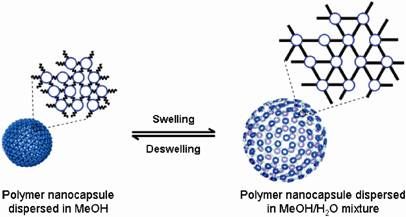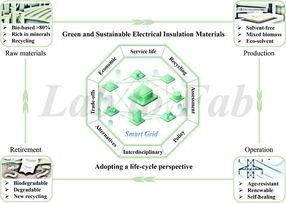Solvents causing a swell
Controlled release of fluorescent dye from swelling nanocapsules is leading the way in stimuli-responsive materials
Advertisement
Korean scientists have developed solvent-responsive polymer nanocapsules. Kimoon Kim and co-workers from Pohang University of Science and Technology and Korea University, Seoul, found that these nanocapsules swelled or deswelled in response to a change in the solvent mixture. The swelling led to an increase in the permeability of the capsule, resulting in the controlled release of an encapsulated fluorescent dye.

Hollow capsules, particularly stimuli-responsive capsules, are of considerable interest because of their potential applications in various areas including drug delivery. Kim explains that ‘although there are a number of examples of stimuli-responsive polyelectrolyte capsules, vesicles, and self-assembled synthetic capsules, stimuli-responsive cross-linked polymer capsules with controlled permeability are still rare.’
However, Kim says that designing and making these capsules for practical applications is still a challenge. ‘For such stimuli-responsive nanocapsules to be clinically useful in drug delivery or diagnostic applications, they should be non-toxic, non-immunogenic and cleared from the body after a certain period of time,’ he explains.
‘One of our ultimate goals is to develop a universal drug carrier useful in targeted drug delivery using such stimuli-responsive polymer nanocapsules with a versatile surface modification capability,’ says Kim. ‘This work is a first major step toward this goal.’
Original publication: Eunju Kim et al., Chem. Commun., 2009.
Organizations
Other news from the department science

Get the chemical industry in your inbox
By submitting this form you agree that LUMITOS AG will send you the newsletter(s) selected above by email. Your data will not be passed on to third parties. Your data will be stored and processed in accordance with our data protection regulations. LUMITOS may contact you by email for the purpose of advertising or market and opinion surveys. You can revoke your consent at any time without giving reasons to LUMITOS AG, Ernst-Augustin-Str. 2, 12489 Berlin, Germany or by e-mail at revoke@lumitos.com with effect for the future. In addition, each email contains a link to unsubscribe from the corresponding newsletter.


























































